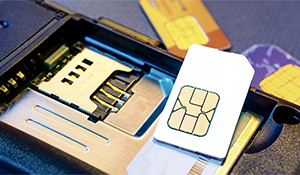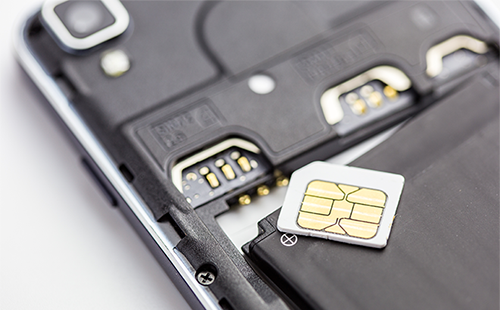How banks can detect SIM Swap Fraud by partnering with JT

With mobile devices being the hottest fraud target, SIM swapping is becoming an increasing concern for banking and payment service providers. The nature of the fraud often puts banks at a position where they are not able to act immediately in case of a compromised verification
Here is how banks can take control of the situation and prevent damage caused by SIM hijacking.
What Is SIM Swap Fraud?
SIM swap fraud is a form of mobile fraud that combines hacking and social engineering techniques to gain access to a person's sensitive information. It takes advantage of a routine cell phone task - moving your phone number from an old SIM to a new one - to route all of a person's phone calls and SMS messages to a phone that the hacker is in possession of.
When a person is trying to port their phone number to a new SIM card - usually after a phone upgrade - they have to provide identifying information before the SIM provider moves their number to the new device. What makes this easy to take advantage of is that all a fraudster has to do is learn what the identifying information is and then use it to impersonate the victim.
Hackers typically use a combination of techniques like phishing and interacting with the victim to get the information they need to successfully pull off the fraud.
Why Banks Are At A High Risk For Fraud
By now, we've all used two-factor authentication at one point or another. The way it usually works is that when you try to log in to a particular account, a text message is sent to your phone before granting account access so that even if someone steals your password, they can't get into your account - right?
So, what does a person do after they've successfully committed SIM swap fraud?
With SIM swap fraud, if the hacker has your password, they will also receive your two-factor authentication code on the phone that they swapped a number to, granting them access to sensitive accounts. Customers of banks are at particularly high risk for SIM swap fraud since the benefits are lucrative for the criminals.
How To Protect Your Bank's Reputation And Customers
At first glance, SIM swap fraud can seem really dire from a bank's perspective. It's your customers being affected, and it's the assets that you are responsible for being taken by fraudsters.
Fortunately, banks have a valuable tool at their disposal for keeping their customers safe, and that's data.
Thanks to the nature of banking, banks gather and store a substantial amount of data on their customers, such as where they live, how they shop, and so on. All of this information can be used to provide extra layers of security for your customers.
Partnering With JT To Reduce Mobile Fraud
JT is a global telecom provider that is leading the way in consumer security. When partnered with JT, banks can utilise the data they already have to automatically keep their customers more secure and reduce the chances of SIM swap fraud success.
JT MONITOR
JT's first line of defence is JT Monitor. JT Monitor maintains a baseline of data on a SIM card and constantly compares that data against new data pertaining to the SIM.
As part of the JT Monitor product range, we offer a single access point to determine the status of a SIM and monitor if the association of a particular SIM to a phone number has changed. This monitoring of SIM at specific intervals provides a level of assurance to customers and reduces exposure to fraudulent activity
When partnered with JT, banks can use JT Monitor to instantly check a SIM's validity before granting it access to a customer's sensitive data. This can prevent fraudulent activity from ever affecting a person's finances, even if a hacker is able to successfully swap that person's SIM.
JT SIGNAL
JT Signal helps protect consumers against another form of fraud - call diversion. Call diversion is similar to SIM swapping in that involves routing a person's phone calls to a phone within the hacker's possession. While they are similar, the two forms of fraud are achieved differently, and therefore require different protections.
Like JT Monitor, JT Signal works by comparing a baseline of information against new data from a particular phone number to see how high of a risk it is for call diversion fraud. It checks to see if a number is being used abroad, and if so, how far away it is from the person's home network, and so on. This allows banks to quickly detect if the person on the other end of the phone is truly whom they claim to be.
This product line features a method to detect if firstly, call forwarding has been applied to a handset, and secondly whether it’s conditional or unconditional. Access to the MNO data is provided via an API using the subscriber’s number as the input. The service provider can then decide as to the authentication measures applied as a result.
JT LOCATE
As the name implies, JT's third line of defence uses information about a SIM card’s location, to determine how likely a person's activity is to be fraudulent.
For example, say a bank's customer is attempting to make a transaction in a foreign country. Before approving the request, the bank can send the request through JT Locate, which compares the provided information against known information about the customer. JT will use the available network information to determine whether or not the request appears to be fraudulent. This empowers banks to approve or deny transactions with little inconvenience to the customer.
Conclusion
Keeping your customers' resources secure is one of the most important jobs of a bank. JT has several features in place to help banks protect themselves and their customers from any fraudulent activity like SIM swapping, helping to keep your customers happy and your brand intact.
 Our team has compiled a comprehensive white paper on SIM swapping. Take a look to learn more on the topic.
Our team has compiled a comprehensive white paper on SIM swapping. Take a look to learn more on the topic.
Categories





